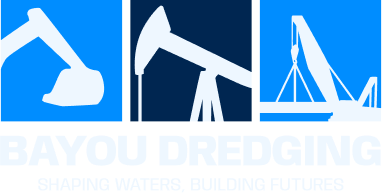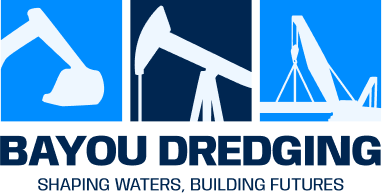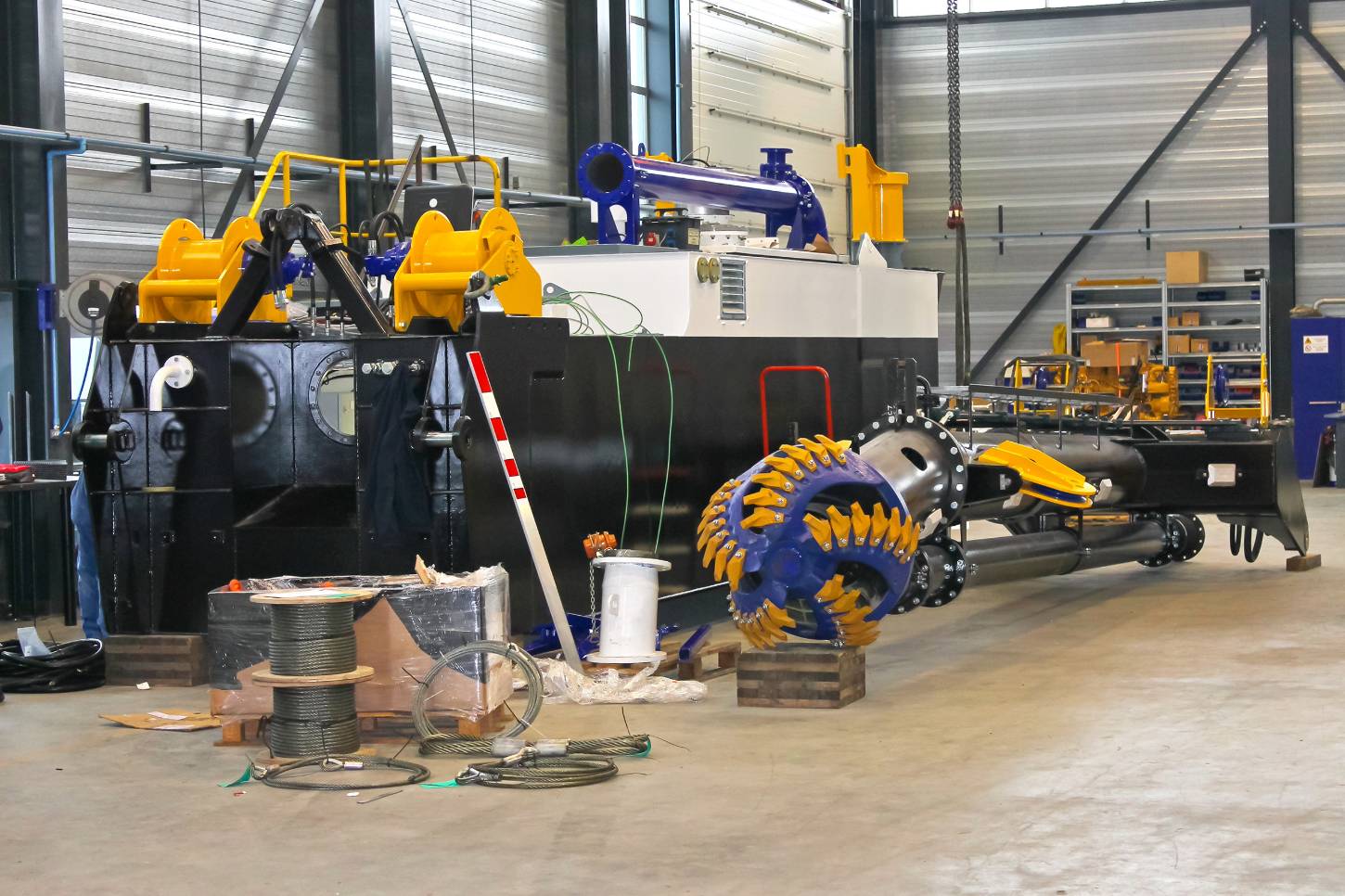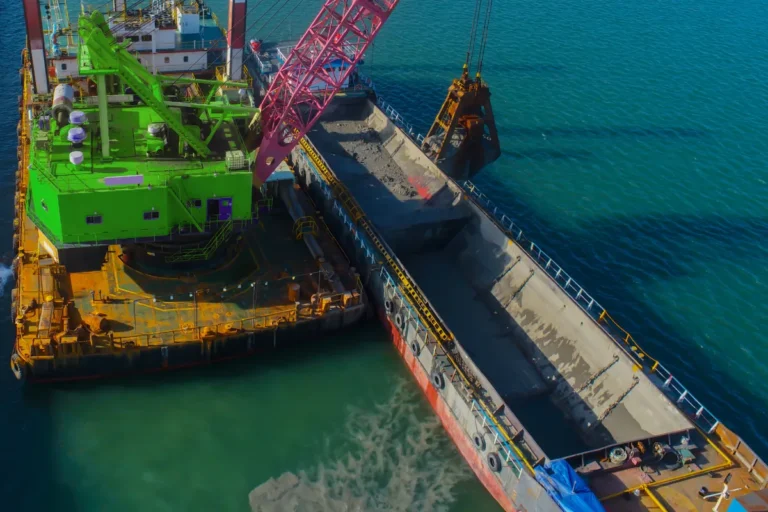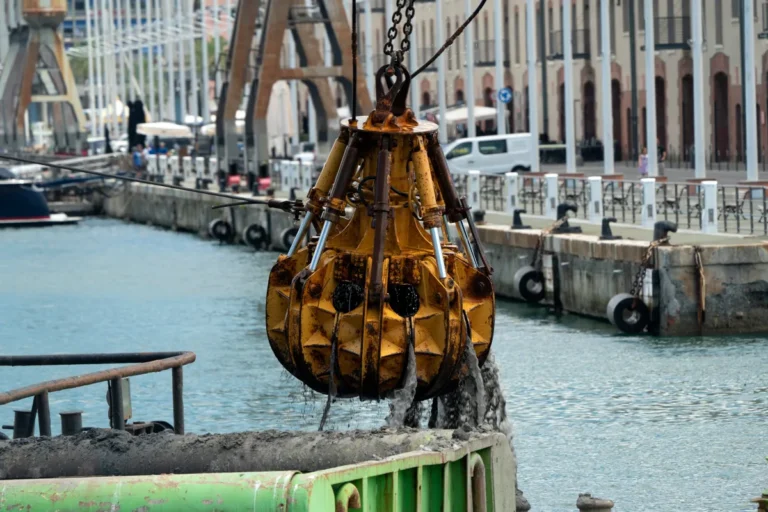Understanding dredge rental cost is essential for anyone planning a dredging project, whether it involves industrial operations or smaller-scale pond maintenance. Renting dredging equipment offers flexibility and access to specialized machinery without the large upfront investment of purchasing. However, rental prices can vary widely depending on several key factors such as equipment type, project location, rental duration, and additional services. This article breaks down the main elements that influence dredge rental pricing, helping you make informed decisions and optimize your budget for successful dredging results.
What Is Dredge Rental?
Dredge rental refers to the practice of leasing dredging equipment for a specified period instead of purchasing it outright. This option is especially attractive for companies or contractors who have short-term projects, seasonal dredging needs, or limited budgets. By choosing dredge rental, users can access advanced equipment without the significant upfront investment and ongoing maintenance costs associated with ownership.
Typical scenarios where dredge rental is preferred over buying include environmental remediation projects, pond maintenance, construction site dewatering, and mining operations requiring temporary dredging solutions. Renting allows operators to match equipment to project requirements without the risk of underutilizing costly machinery.
There are several types of dredges commonly available for rent, catering to a wide range of dredging applications. Popular rental options include suction dredges, which are ideal for removing loose sediments and slurries; cutter suction dredges, suited for tougher soils and compacted materials; and pond dredge equipment rental options specifically designed for smaller-scale water bodies like ponds, lakes, and lagoons. Pond dredges are typically more compact and easier to maneuver, making them a cost-effective choice for landowners and municipalities managing sediment buildup.
The benefits of renting dredging equipment extend beyond cost savings on the dredge rental cost itself. Renting provides flexibility to scale operations according to project duration and size, reduces storage and maintenance responsibilities, and grants access to the latest technology without committing to a purchase. This makes dredge rental an efficient and practical solution for many dredging projects across industries.
Key Factors Affecting Dredge Rental Cost
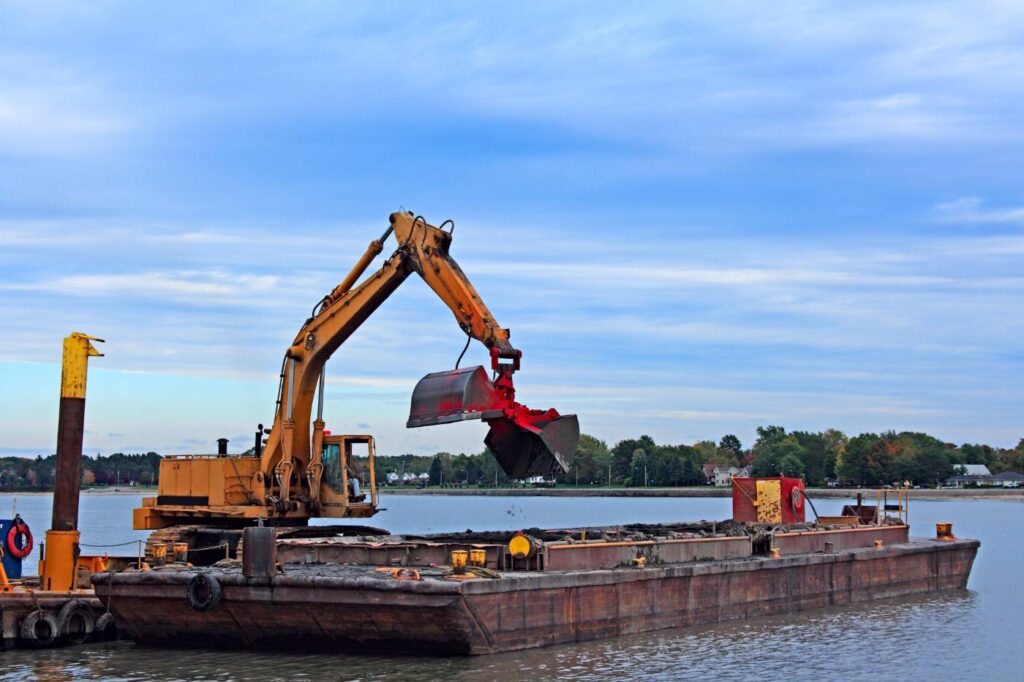
Understanding the various elements that influence dredge rental cost is essential for accurately budgeting your project and selecting the right equipment. Multiple factors come into play when determining the overall price of renting dredging machinery, and being aware of these can help you make more informed decisions.
First, the type and size of dredge significantly impact rental pricing. Larger, more powerful dredges designed for heavy-duty industrial applications typically command higher rates compared to smaller machines used for lighter work. For example, pond dredge equipment rental tends to be more affordable due to its compact size and suitability for smaller-scale projects.
The rental duration is another crucial factor. Rental companies often offer different pricing structures depending on whether you rent equipment daily, weekly, or monthly. Longer rental periods usually come with discounted rates, which can reduce the average dredge rental cost per day. However, shorter rentals might incur higher daily fees but provide flexibility for brief projects.
Project location and site accessibility also influence pricing. Remote or difficult-to-access sites can increase transportation and mobilization costs, which are typically added to the base rental fee. If the dredge needs to be moved over long distances or through challenging terrain, expect higher charges reflected in the final rental cost.
The condition and technology level of the dredge can affect pricing as well. Newer dredges equipped with advanced features or higher efficiency systems may carry premium rental rates, but can improve productivity and reduce operational expenses. Conversely, older models might have a lower dredge rental cost but potentially higher maintenance risks.
Finally, whether the rental includes operator services or maintenance support will impact pricing. Some rental agreements offer full-service packages with experienced operators and technical assistance, which add to the total cost but can simplify project management.
By evaluating these key factors, you can better anticipate the true cost involved in your dredge rental and choose the right equipment that fits both your operational needs and budget.
Type and Size of Dredge
One of the most significant factors influencing dredge rental cost is the type and size of the dredging equipment selected. Different dredge models are designed for varying applications, and their capabilities directly affect rental pricing.
Smaller dredges, such as those used in pond dredge equipment rental, are typically more compact and have lower horsepower. These machines are ideal for light sediment removal, small ponds, lakes, and other confined water bodies. Because of their size and limited capacity, rental rates for pond dredges tend to be more affordable and accessible for smaller projects or seasonal maintenance.
On the other hand, larger industrial dredges—like cutter suction dredges or trailing suction hopper dredges—are built for heavy-duty tasks, such as deep-water excavation, mining, and large-scale sediment removal. These machines require more power, advanced components, and often include features to handle tougher materials or longer distances. Consequently, their rental fees are considerably higher to reflect the added complexity and operational costs.
Additionally, the size of the dredge impacts not just the rental price but also transportation and setup expenses. Larger dredges may need special handling, permits, or multiple trips for mobilization, which can further increase the overall dredge rental cost.
When planning your project, understanding the differences in rental rates between smaller pond dredges and larger industrial dredges can help optimize your budget and ensure you rent equipment best suited to your dredging needs.
Rental Duration and Usage
The length of time you rent dredging equipment plays a crucial role in determining the overall dredge rental cost. Rental companies typically offer flexible pricing structures based on daily, weekly, or monthly terms, allowing clients to choose an option that best fits their project timeline and budget.
Daily rentals are ideal for short-term projects or emergency dredging needs but tend to come with higher per-day rates. Weekly and monthly rentals generally provide more cost-effective pricing, significantly reducing the average daily expense when equipment is needed for extended periods. By committing to a longer rental duration, you can negotiate better rates and lower your total dredge rental cost.
Usage intensity also influences rental agreements and pricing. Projects requiring continuous or heavy use may lead to higher wear and tear on the equipment, prompting rental companies to include additional charges or maintenance clauses in the contract. Conversely, light or intermittent use may offer more flexible terms.
For those considering pond dredge equipment rental, rental duration is equally important. Seasonal maintenance projects on ponds or small lakes may benefit from monthly rentals, providing ample time to complete sediment removal without the pressure of daily fees. Understanding how rental length and usage affect pricing helps ensure you optimize your investment and avoid unexpected costs.
Project Location and Accessibility
The location of your dredging project significantly impacts the overall dredge rental cost, primarily through transportation and mobilization expenses. Moving dredging equipment to and from the project site involves logistics that vary depending on distance, terrain, and site accessibility.
For projects near urban centers or easily accessible waterways, transportation costs are typically lower, making the dredge rental more affordable. However, when a project site is located in a remote area or difficult-to-access location, such as wetlands, isolated ponds, or rugged terrain, mobilizing the dredge can become a complex and costly task. Specialized vehicles, permits, or additional labor may be required to safely transport equipment, which adds to the overall rental price.
This factor is especially relevant for pond dredge equipment rental, where small, lightweight dredges can sometimes be transported more easily to remote pond locations. Yet, even with compact pond dredges, access challenges like narrow roads, soft ground, or limited waterway entry points can increase mobilization costs and, consequently, the dredge rental cost.
Considering project location and accessibility early in the planning phase helps anticipate these additional fees and avoid unexpected expenses when renting dredging equipment.
Equipment Condition and Technology
The condition and technological features of dredging equipment play a significant role in determining the dredge rental cost. Newer dredges often come equipped with the latest advancements in design, efficiency, and safety, which can result in higher rental fees compared to older models.
Modern dredges may include features such as improved hydraulic systems, energy-efficient pumps, advanced control interfaces, and enhanced sediment handling capabilities. While these technologies can increase the upfront dredge rental cost, they often lead to better operational performance, reduced fuel consumption, and less downtime, ultimately benefiting project timelines and budgets.
When considering pond dredge equipment rental, opting for newer or technologically advanced models may provide advantages in maneuverability and precision, especially in environmentally sensitive or confined areas. Conversely, older dredges offer a lower rental rate but could come with increased maintenance risks or less efficient operation.
Balancing equipment condition with project requirements is key to managing costs effectively. Investing slightly more in advanced dredging technology can deliver greater value through improved productivity and reduced operational challenges.
Operator and Support Services
When renting dredging equipment, one important factor influencing the overall dredge rental cost is whether the rental agreement includes operator and support services. Some rental companies provide skilled operators as part of the package, while others require clients to supply their personnel to operate the dredge.
Including operator services can increase the total dredge rental cost, but it also offers advantages such as professional handling of the equipment, reduced risk of damage, and smoother project execution. For clients unfamiliar with dredging operations or who lack trained staff, opting for a full-service rental can be a valuable investment to ensure safety and efficiency.
Similarly, support services like routine maintenance, troubleshooting, and technical assistance are often available as add-ons to the base rental. These packages can prevent costly downtime and extend equipment life, but will add to the overall rental fees.
In the case of pond dredge equipment rental, operators might be more readily available or less specialized, potentially lowering service costs. However, clients should still consider whether including operator support fits their project needs and budget.
Carefully evaluating the level of operator and support services required helps control dredge rental costs while maintaining operational reliability throughout the dredging project.
Project Complexity and Material Type
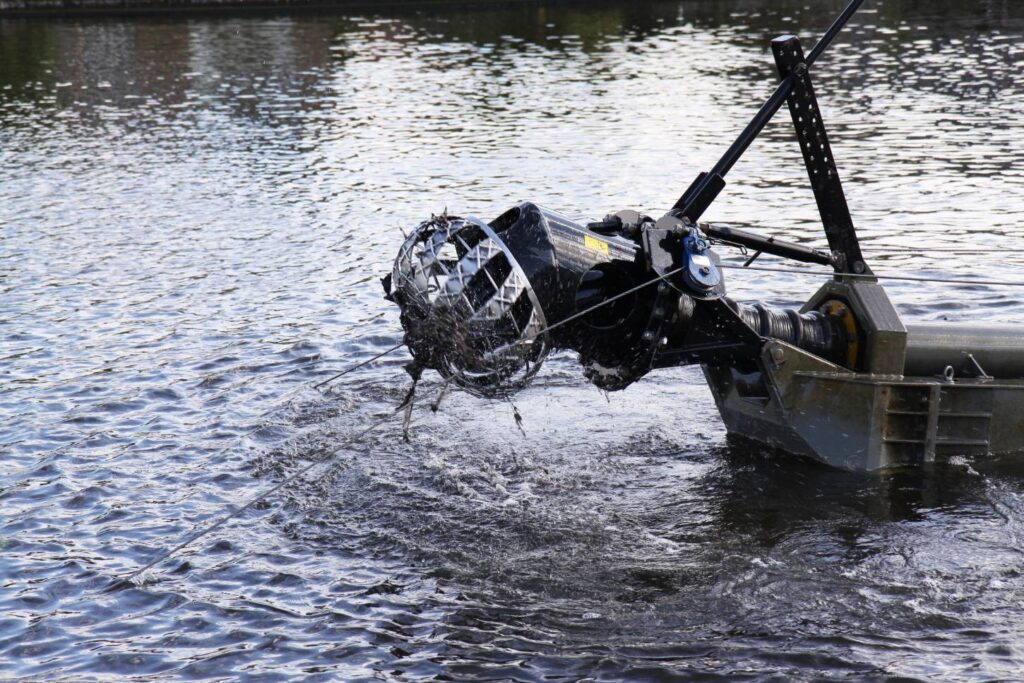
The nature of the sediment being dredged significantly influences the dredge rental cost and the overall rental agreement. Different materials, such as mud, sand, gravel, or compacted soils, impact equipment wear and tear differently, affecting maintenance requirements and rental terms.
For instance, dredging soft mud or fine silt generally causes less abrasive wear on equipment, which can help keep dredge rental expenses lower. Conversely, abrasive materials like sand or gravel increase the risk of faster equipment deterioration, potentially leading rental companies to impose stricter usage limits, higher maintenance fees, or premium charges to cover anticipated repairs.
In addition to material type, the complexity of the dredging project itself plays a critical role in pricing. Projects that require precision dredging to avoid disturbing sensitive environmental areas, comply with strict regulatory standards, or navigate difficult underwater structures typically involve more careful operation and advanced equipment. These factors can increase the dredge rental cost due to the need for specialized machinery and experienced operators.
For smaller-scale operations, such as those involving pond dredge equipment rental, project complexity might be lower, but environmental considerations and sediment characteristics still influence rental pricing. Understanding how both sediment type and project complexity affect costs enables better budgeting and equipment selection for successful dredging outcomes.
Understanding Additional Costs Beyond Basic Rental Fees
When evaluating dredge rental cost, it’s important to consider expenses beyond the basic rental fee. Several additional charges can significantly impact the total cost of your dredging project.
One common extra cost is mobilization and demobilization fees. These fees cover the transportation, setup, and removal of dredging equipment at the project site. Depending on the distance and complexity of the site, these charges can add substantially to the overall rental cost, especially for remote or hard-to-access locations.
Another ongoing expense is fuel and consumables. Dredges consume fuel during operation, and depending on the rental agreement, the client may be responsible for covering these costs. Other consumables, such as hydraulic fluids or replacement parts, may also be billed separately, affecting the total dredge rental expenditure.
Maintenance and wear charges can arise if the equipment incurs damage or excessive wear during the rental period. Rental companies typically outline these terms in the contract, so understanding your responsibilities for upkeep is critical to managing costs.
Finally, insurance and permits related to dredging operations are essential considerations. Projects often require environmental permits, safety inspections, and insurance coverage, which may not be included in the base rental fee but are necessary for legal and safe operation.
Whether renting heavy industrial dredges or opting for pond dredge equipment rental, factoring in these additional costs ensures a more accurate picture of the total investment needed for your dredging project.
Pond Dredge Equipment Rental: Specific Considerations
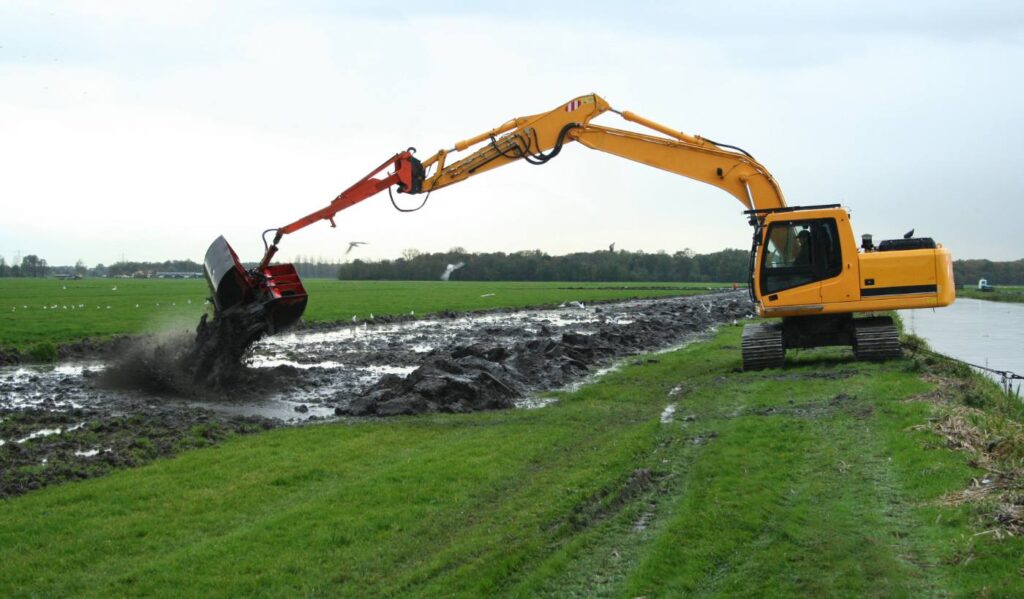
Pond dredge equipment rental often differs from other types of dredging equipment due to the unique requirements of smaller-scale water bodies. As a result, the dredge rental cost for pond dredges is generally lower than that of larger industrial dredges, reflecting differences in size, power, and operational complexity.
Pond dredging projects typically involve less sediment volume and shallower depths, which reduces wear on equipment and shortens project durations. The ease of transport and setup for pond dredges also contributes to more affordable rental rates. Many pond dredges are designed for portability, allowing operators to quickly mobilize equipment without extensive logistical challenges that can increase dredge rental expenses.
Rental pricing models for pond dredging equipment often include daily, weekly, and monthly rates, with discounts available for longer-term commitments. Some suppliers may also offer package deals that include operator services or maintenance support, providing flexible options tailored to the scope of pond maintenance or sediment removal projects.
Understanding these specific considerations helps clients budget more accurately and select the right equipment, ensuring the most cost-effective solution for pond dredging needs.
Tips for Managing and Reducing Dredge Rental Costs
Effectively managing dredge rental costs starts with careful planning and strategic decision-making. One of the most important steps is to plan your rental duration thoughtfully. Avoiding unnecessary rental days by aligning equipment use with the actual project timeline helps reduce overall expenses significantly.
Choosing the right dredge size and type for your specific project needs is another key factor. Renting oversized equipment can increase your dredge rental fees without adding value, while undersized dredges may prolong the project. Matching equipment capacity to the job scope ensures optimal efficiency and cost-effectiveness.
Consolidating dredging phases is also an effective way to minimize mobilization and demobilization charges. By grouping work into continuous periods rather than multiple short rentals, you reduce transport and setup fees, which often add substantially to rental costs.
Finally, don’t hesitate to negotiate service inclusions such as operator support and maintenance packages. Rental companies may offer bundled services or discounts, helping you manage pond dredge equipment rental costs more predictably while ensuring smooth project execution.
Implementing these tips can help you control and lower your overall dredge rental expenses while maintaining project quality and efficiency.
How to Get Accurate Dredge Rental Cost Estimates
Obtaining precise dredge rental cost estimates requires providing detailed project information to rental companies. Clear specifications about the project scope, sediment type, water depth, and location enable suppliers to offer accurate quotes tailored to your needs. The more comprehensive your project details, the better the rental company can match the right equipment and services.
When requesting quotes, it’s important to ask targeted questions. Inquire about what is included in the rental fee, such as operator services, maintenance, fuel costs, and mobilization charges. Clarify rental duration options and any penalties for early return or extended use. For those interested in pond dredge equipment rental, confirm equipment capabilities and suitability for your specific pond conditions.
Comparing multiple rental offers is essential to find the best value. Don’t base decisions solely on the lowest price—consider the reputation of the rental company, equipment condition, and included support services. A detailed comparison helps ensure you get a competitive dredge rental rate that meets both your budget and project requirements.
By gathering thorough information and asking the right questions, you can secure accurate and fair rental cost estimates for your dredging project.
Conclusion
Accurately assessing dredge rental cost requires a clear understanding of the many variables that affect pricing, from equipment selection and project complexity to location and service needs. Whether you are considering large industrial dredges or pond dredge equipment rental, careful planning and thorough communication with rental providers are critical to securing the best value. By evaluating all cost factors and asking detailed questions, you can effectively manage your dredging budget and ensure your project runs smoothly and efficiently.
